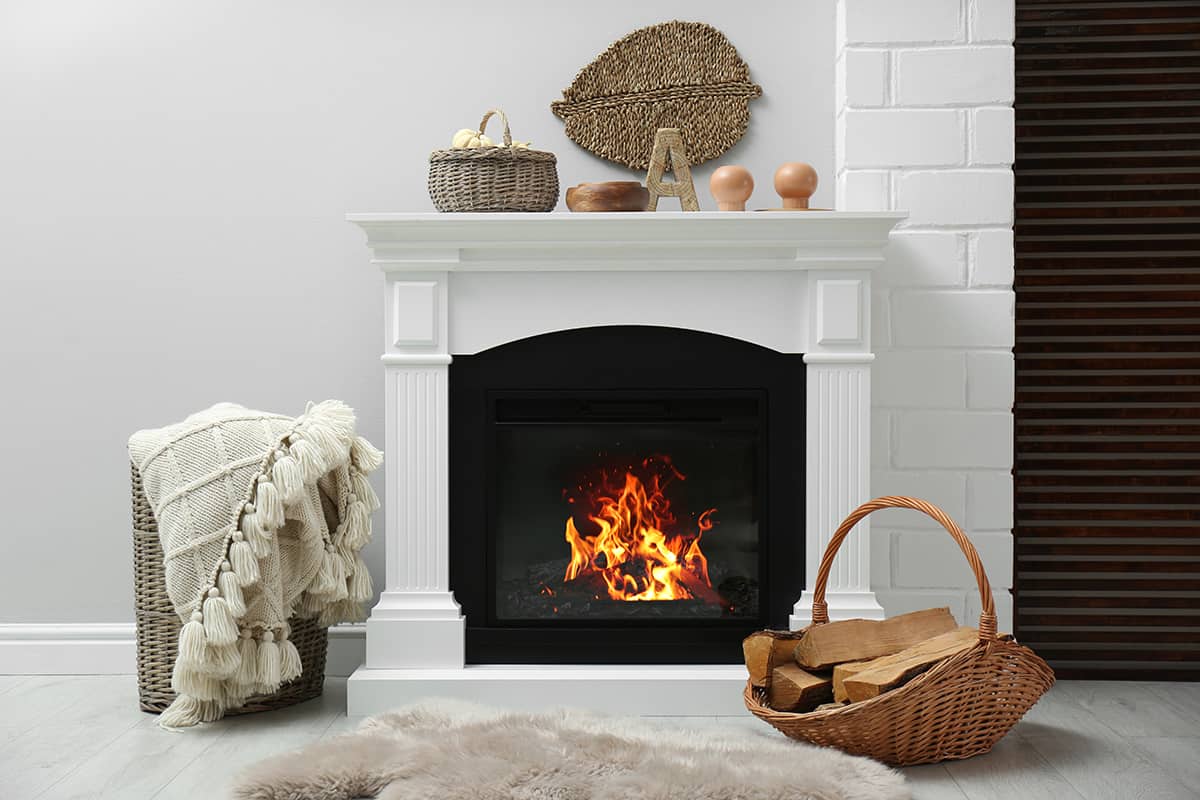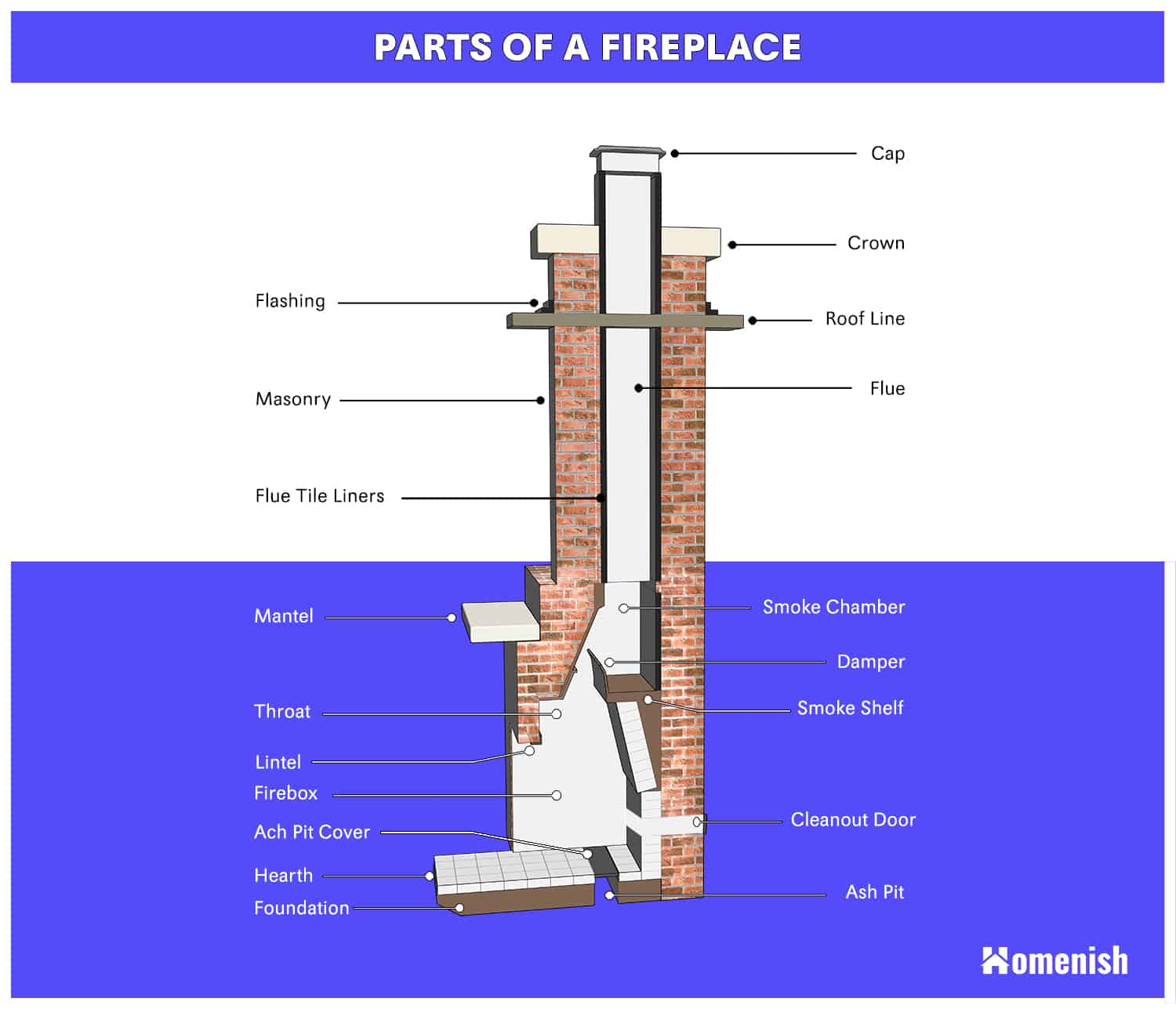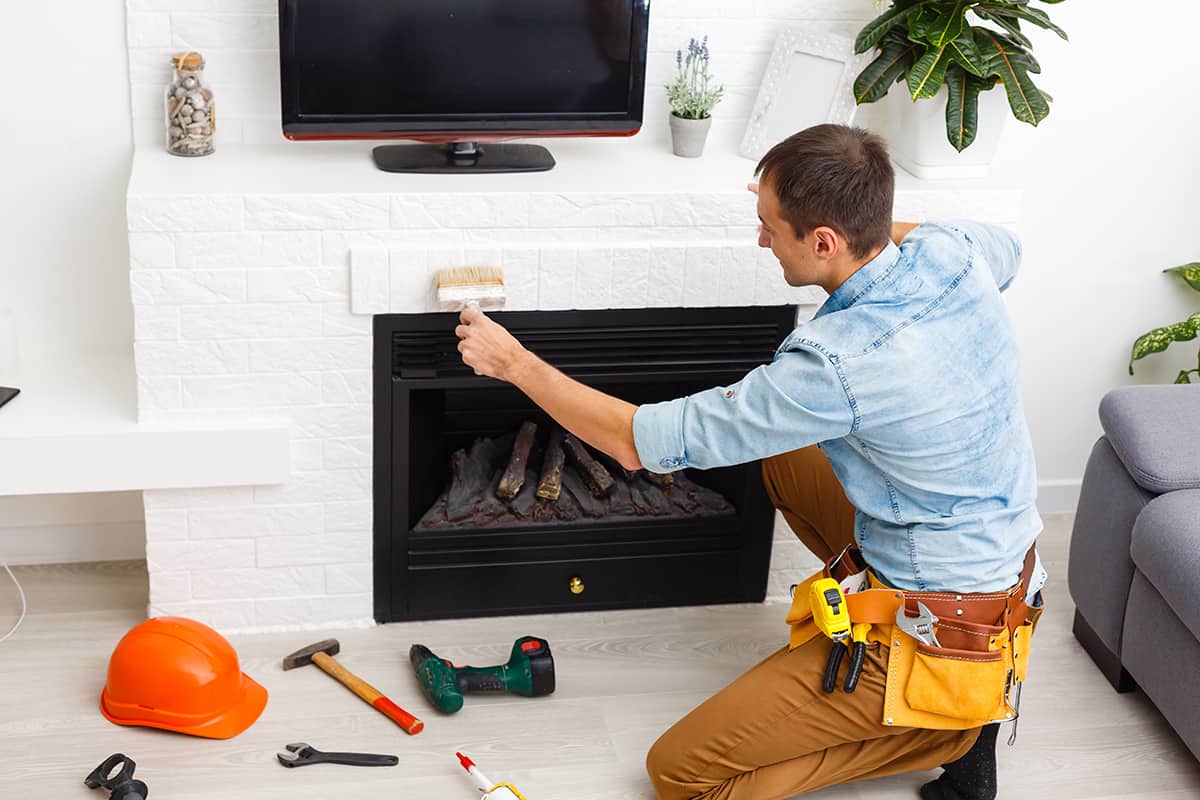Fireplaces add a nice warm and cozy atmosphere to a room, as well as being an important source of heat to keep the temperature in a home comfortable. The size of a fireplace will differ from property to property, although the actual fireplace opening itself tends to usually be between two and three feet wide.
Here we will look at the dimensions of fireplaces and their decorative components. Before explaining the sizes of different parts of a fireplace, you can follow our fireplace anatomy guide and check our the diagram below to understand its parts.
Fireplace Size
When discussing the size of a fireplace, we first need to understand which parts of the fireplace we are including in our measurements. Most fireplaces will have a width measurement of between 2 and 3 feet, or 24 inches and 36 inches.
This refers to the actual opening of the fireplace, which is where the fire will burn and direct smoke up through the chimney. This measurement does not take into account the size of any of the surrounding components, such as the mantelpiece of the hearth.
Fireplace opening
The opening of the fireplace is the central part of your wall, which will have been hollowed out to contain the fire. This should be 16 inches deep and between 24 and 36 inches wide. The height of the opening should be around 24 to 30 inches.
Firebox
The firebox will usually be inserted inside the fireplace opening, and it will be shaped to guide smoke from the fire upwards and out of the chimney. It will have the same width as your fireplace opening and a similar height, but the depth measurement will be slightly smaller.This is because the firebox will be tapered inwards in order to encourage the smoke’s direction, preventing smoke from coming into the room of the home.
Hearth
The hearth of a fireplace is the floor immediately in front of it. This needs to be made from a fire retardant material and is commonly constructed of marble, tile, or brick.
The hearth must have a clearance of at least 16 inches in front of the fireplace opening, and it must extend at least 8 inches to each side of the fireplace opening. For example, if your fireplace opening is 24 inches wide, then your hearth will need to be at least 40 inches wide to accommodate an extra 8 inches on each side.
This will mean that any embers that escape the fire will land on the hearth, and therefore they won’t cause damage to the flooring in the room, and they won’t be able to cause a house fire. You must ensure that your hearth meets these requirements because your insurance may be invalidated if the hearth is too small.
Damper
The damper is a piece of the fireplace that sits above the fire to control airflow. If you open the damper and allow increased airflow, then the fire will burn more ferociously. If you close the damper to reduce airflow, then this will make the fire burn more slowly and gently.
The damper will need to be positioned at least 8 inches above the top of the fireplace opening and at around 36 to 38 inches above the surface of the hearth.
Mantel
The mantel of a fireplace is the decorative surround that is fixed to the wall around the fire opening. This can be used to make a real feature out of the fireplace by drawing attention to it and making it a focal point. In a traditional-style home, you could opt for a wooden mantelpiece with a shelf on top to create a surface for photo frames and ornaments, or in a more modern home, you might prefer a tiled mantel.
The mantelpiece can make the fireplace look much more extravagant by adding extra size to it and making it seem like a more robust and significant feature in the space.
You can expect that a standard mantel will extend around 8 to 12 inches on either side of the fire opening; therefore, if a fire opening is 24 inches wide, then the mantel could be between 40 and 48 inches wide, though, in customized mantels, this size can be much bigger. The mantel is usually taller than it is wide, and so the top of the mantel will typically extend around 1 and a half to 2 feet above the opening of the fireplace.
The top shelf of a mantel should be at least 6 inches deep, creating a reasonably sized surface for displaying items. The mantel height will decide how deep the mantel is. The higher the mantel is, the deeper it is.
You can find mantels in different materials, including solid wood, MDF, and marble. Some people build their own mantels with bricks and then place a wooden shelf on top, or you could cover a masonry fireplace in tiles.
If you want to change the look of your mantel without splashing out much money, then you could paint it. This can work well on brick or wooden mantels and bring new life to a dated-looking fireplace.
How to Measure Your Fireplace
If you need to measure your fireplace, then this usually means measuring the fireplace opening. You will want to know the fireplace opening dimensions when buying a new mantel to ensure that the mantel is bigger than the opening. Use a tape measure to measure the width and height of the fireplace opening, and then choose a mantel that will be compatible with these sizes.
The depth measurement of a fireplace is not usually important from an interior design perspective, but as standard, these are usually always 16 inches deep. If you are considering replacing your current mantelpiece, then you can measure your current one to help you get an idea of the size you need.
If you are happy with the size of your current mantel but want to change the style of it, then you can measure it and find a new one in the same size. However, if your current mantel looks out of proportion with the rest of the room, then you can measure it and find a new mantel that is either bigger or smaller to meet your preferences.








